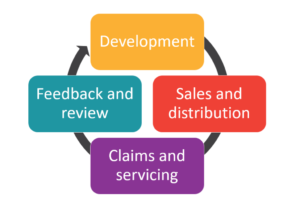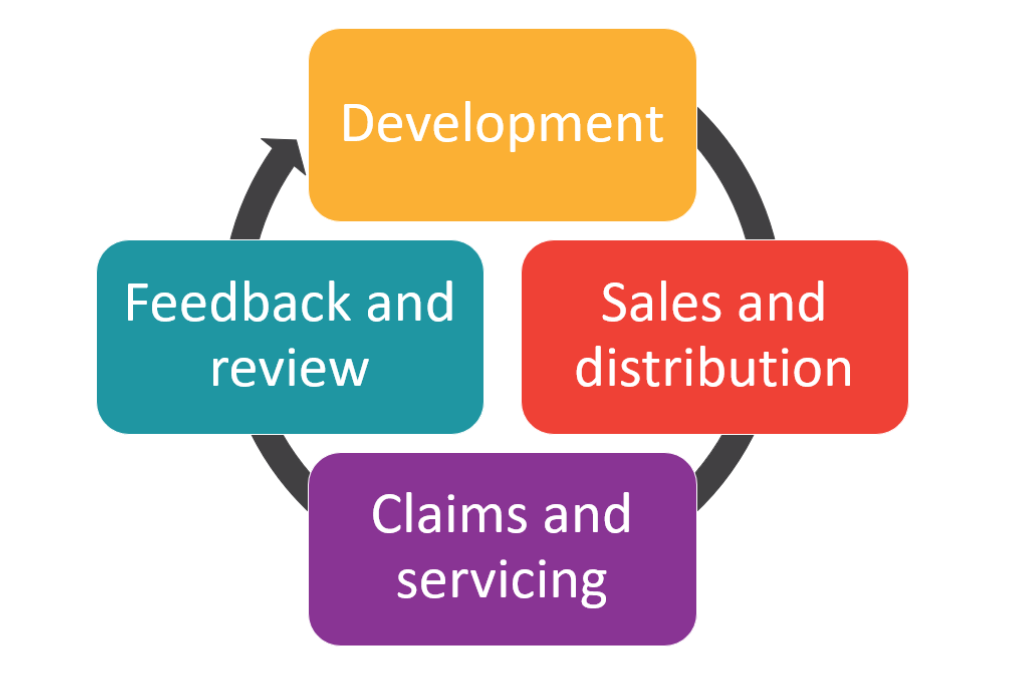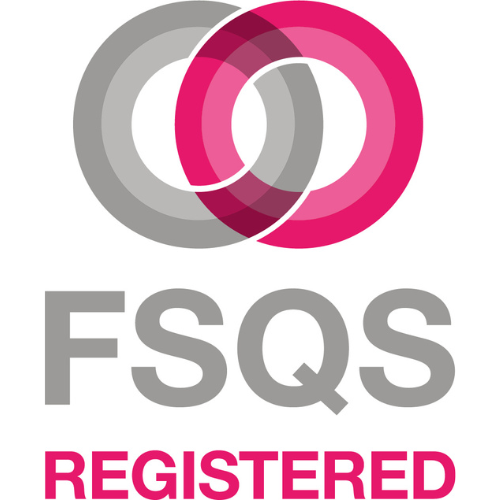This article is the first in our series on the Insurance Distribution Directive (IDD) due to come into force in the UK on 1st October 2018. Our approach is to not just raise for our customers and others the fact of new regulation, but also to give insight into issues which may arise with a view to helping our clients to frame their response.
In this article we look at one of the most significant issues arising from the introduction of the IDD: product governance. For many these obligations are not new in the sense that the Financial Conduct Authority (FCA) has through its approach to Conduct Risk had an expectation that insurers and intermediaries will ensure their products are appropriate and being sold to the intended customers, for whom they will meet their needs. Indeed, for MiFiD firms product governance requirements have been around for some time. The significant change brought about by the IDD is that this expectation is, from 1st October, being written into the FCA rule book so there will be no excuse for insurers and intermediaries to not have the right approach to product governance. Added to this is that there is greater clarity about whom the obligation falls on. Historically, it was generally accepted to be the insurer. From 1st October the obligation may also be that of the intermediary if they are responsible for and have ownership of the product under development.
Product governance involves not just having an approach to overseeing the development of a product wording. It encompasses all aspects of the lifecycle of the product including the sales and servicing and then review of performance which may or may not result in changes in approach to the product itself or the sales and servicing.
Oversight of the entire lifecycle is essential and for this reason many insurers have developed a detailed governance framework involving policies, procedures and in many cases a Committee which is sometimes a Board sub-Committee. In the case of Lloyd’s Managing Agents this is a requirement having been written into the Lloyd’s Minimum Standards. Outside of Lloyd’s flexibility is available but it is important that there is a clear framework for governance of products and their lifecycle, including most importantly the setting of KPIs and thresholds and the review of appropriate Management Information on product performance, the ability to identify issues and where they exist correct them.
The Product Lifecycle
For our purpose there are four stages in the product lifecycle:
- Development
- Sales and distribution
- Claims and servicing
- Feedback and review
This is not a standard for most product lifecycles which is ordinarily accepted as conception and launch, growth, maturity and decline. However, many insurance products do not follow that cycle and rather than decline are continually improved and sold. Notwithstanding this the FCA does have expectations that there will be some planning, where necessary, such as in the life market, for the decline of products when they are being developed.
We will look at each of these in turn, but it is best seen as a continuous circle, which in the eyes of the FCA should be a virtuous circle.

Development
The focus in the development stage is to ensure that the product has been designed for its target market. There are a many obvious aspects to this including identifying the target market and development of the wording, but it goes further. Those two alone are not enough. Other issues to consider include the need for suitable testing of the product and taking steps to ensure that it reaches the intended market in an appropriate way. It is here that other aspects of the IDD have a direct relationship such as the requirement to act in the best interests of the customer and the obligation to ensure those distributing product are properly trained.
The Product
All insurance products are expected to meet the needs of the buyer. This is easily achieved where the buyer is a sophisticated large corporate entity who engage a broker to help them acquire a bespoke product. In the mass market of heavily distributed products being sold to less sophisticated buyer such as small businesses and individuals there is more complexity required in development stage because the product is going to be sold to a mass market and there is a greater risk that it will be sold to buyer for whom it is not intended.
Even a common product like motor insurance requires appropriate development and governance. The inclusion of an exclusion may result in the product being inappropriate for some or all of the buyers or a buyer paying for a benefit they may never use and it is therefore important that thought is given to the benefits and exclusions in intended product. Thus, for example, the development of a motor insurance policy for a specific segment of the market such as vintage cars, will have cover and clauses that may differ from a more generic motor policy. Your average buyer of motor insurance these days will expect a replacement vehicle so not providing this benefit might result in a mis-sale unless it is clear in the product that there is no replacement vehicle. On the other hand, there may be no point in including cover for a replacement vehicle in a policy covering a vintage car which is only driven once in a blue moon and if the buyer is charged a premium based on an assumption of a replacement vehicle the buyer may be paying for a benefit they will never use.
Taking the wordings of other insurers and intermediaries in the market and creating a product which is similar or identical will never of itself be sufficient.
Target Market
Developing a product without regard to the target market is like going to sea without checking the weather. You can do it but don’t be surprised if you hit a storm which causes havoc and damages your ship.
In developing a product, understanding your target market is as important as the cover and exclusions which make up the product because of the need to ensure that the product meets the needs of the customers as illustrated by the motor example provided above. There have been so many examples in recent years of products which have not been suitable for those to whom they have been sold and the outcome has been costly to the insurers and intermediaries (including banks) who have sold the products.
So at the same time that you are developing the product there is a need to define your target market in order to be able to establish the likely needs of the customers who will buy the product under development. Caution is required to ensure the needs of the market are identified and the product meets those needs. As with all other considerations in the development of the product and the lifecycle itself how the market was identified and who the market is should be recorded.
Identifying the target market will also drive additional considerations such as how you will distribute the product, the cost to be charged and the information required to ensure that the product is being sold to the right market and performing as expected.
Distribution
While developing a product the proposed method of distribution should be considered as it drives further considerations.
Using the earlier motor insurance example, distribution of a broad motor policy can be undertaken in all manner of ways including direct on-line, via market place platforms, through local brokers, via MGAs and the wholesale market etc. Most of these may also be usable for vintage car insurance sales if you wish but they may not be as effective because your target market is likely to be higher net worth individuals whom might prefer a broker.
A regulator is not particularly interested in whether an insurer or intermediary has effective distribution and will therefore be successful. From their point of view the need to consider distribution is mostly about the need to ensure that the method of distribution will ensure that the product is sold only to the target market – that is those for whom the product has been developed. Mass retail products can be sold using mass distribution models (subject to a few points covered later) but more targeted or specialist products are likely to require a more considered and targeted distribution model. Developing a motor policy and then appointing an MGA or intermediary with no experience in motor to sell the product is unlikely to ensure that the product is a success. It is also likely to create the risk of mis-selling. On the other hand, developing a vintage car policy and asking a specialist broker to distribute the product would reduce the risk. Likewise developing a life product and providing it to a general insurance broker without the license to sell the product would not be appropriate for the same reason and because they have no license.
An insurer is under an obligation to consider the method of distribution as well as undertake some due diligence on the ability of the distributor to deliver the product to the target market. Even using online distribution models require due diligence. The considerations to be investigated include:
- How will the product be distributed?
- What is the experience of the proposed distributor with that type of product?
- What is the experience and knowledge of its staff in dealing with the distribution or servicing of the product?
- What knowledge do they have of the product?
- How do they identify their target market?
- How do they ensure the product reaches the target market?
Marketing and Sales Materials
The insurance policy cannot stand alone. It is a well known fact that most retail customers and many small business customers do not read their policies but rely on what they are told about the product by their broker or by the marketing material provided during the sales process. If the marketing material is inaccurate or misleading the customer’s expectation about the product they buy may be different when it comes time to need to make a claim. Furthermore, if a product will perform differently from common customer experience and expectations, as in our example of a vintage car policy not providing a replacement vehicle, then the pre-sales communications must ensure this deviation is highlighted and understood.
The marketing material used is a key control in both ensuring that the product reaches the target market and in limiting the distribution to the target market. Where a product is being mass distributed the marketing material should identify the target market in a way which lets the buyer know whether the product is suitable for them. This can include a discussion of the reasons why, for example, “This insurance policy has been developed specifically for the owners of vintage cars” to carry on the example.
In addition, the IDD contains a requirement for an Insurance Product Information Document (IPID) which must set out the key features of the product. Though the FCA rules for a key facts document have been around for some time the IPID will take these requirements further. Arguably the more rigid format constraints of the IPID versus the key facts document will actually make it less effective for customer understanding, which only goes to heighten the importance of the other sales and marketing communications in ensuring the customer buys what they expect and what they need.
When developing the product it is key that the developer considers and approves the marketing materials which will be used to sell the product. If that is on-line this should include any information about the product on the website. Again, the consideration of the marketing material should be documented.
Product Performance Measures
As a product is developed there is a need to also consider the approach to measuring performance of the product. This is key in being able to evidence that the product is performing the way it was intended and if not to use the information as feedback to adjust any aspects of the product, marketing material, distribution model etc. as appropriate to improve performance.
There are as many forms of performance measurement as there are products, but the key ones will come from sales information, servicing and claims including the following:
- Customer feedback surveys
- Early cancellation rate
- Ongoing Cancellation rate
- Customer Queries
- Claims Frequency
- Declined Claims
- Gross and net Loss Ratio per product
- Complaints
- Claims Acceptance/declinature Rate
- Average Claims Pay-out
- Sales (Gross Premium Income) Actual vs Forecast
The product developer(s), being insurer and/or intermediary, will need to ensure they have not only identified appropriate performance measurement indicators but they must be able to implement a process for prompt collection of the information and undertake root cause analysis as appropriate so they can review the results regularly. They need to ensure that all the distributors of the product can access and review the information required. Key thresholds should be developed with a view to identifying what is an acceptable performance and what is not so that if threshold breaches occur a review is triggered. For example, mid-term cancellations within the 14 day cancellation period where for one product 10 % may be acceptable and for another 5%.
Additional customer feedback is useful and this is why consumers who have dealt with a business service team on the phone will then often receive a short survey afterwards.
Most importantly it is necessary when developing the performance measures to ensure that they are not skewed in any way, such as setting a key threshold too high. For example, setting a threshold for early cancellations at 60% for the first 14 days after a sale is clearly wrong. Any product which approaches that rate is obviously not designed for the market it is being sold to and/or may be being mis-sold. The threshold would need to be significantly lower in order to ensure the performance measurement and trigger for a review is not meaningless. Another common issue was customer surveys skewed in a manner which meant that although the customer wanted to give negative feedback it was difficult. The survey must be balanced and capable of providing feedback which can be used to identify issues for review/remediation.
Regulators, and the FCA in particular, are accustomed to and adept at identifying faulty and biased customer feedback mechanisms or performance measures where the thresholds have been set in a way to result in little impact. Creating a biased approach in this manner will only confirm negative views about a firms’ competency rather than assist the firm in ensuring the feedback is helpful. Objective feedback should also be beneficial to a firm in that it should continue the virtuous circle and lead to better products and better sales.
Cost
The cost of a product is important not only in terms of whether a consumer will buy a product but also in evidencing whether the product is appropriate and/or being mis-sold. Therefore, in developing a product consideration of the cost and possible profit margin must be intrinsically an element. Documenting the reasons for choosing pricing levels are a key element in this.
The debate about product value and what is acceptable or not will continue for many years and each product is different and there are different reasons for pricing a product. For the purpose of this article all that is required is a broad statement that when developing a product there must be a record of why a certain pricing model was adopted and the pricing model should include consideration of the distribution costs.
Training
At the product development stage, it is important that training is considered because of the importance of ensuring that the product is performing appropriately. So, an insurer or intermediary developing a product must ensure that the people and companies selling the product are appropriately trained on the product. As important are those individuals involved in servicing the customers and/or handling claims. If, for example, an individual who is selling the product does not know the key features or the target market, there is a strong chance they will misdescribe the benefits or exclusions or sell the product to the wrong customer leading to poor customer outcomes. Likewise, a claims handler who does not understand the product could mis-adjust a claim.
The product developer should therefore, where appropriate (for example using a new distributor or creating an entirely new product) ensure that they prepare training for and plan for all those who ned to understand the product to be trained.
The IDD specifically identifies this need by creating a legal requirement for product distributors to receive a minimum level of training each year.
Testing
There are often significant commercial benefits to testing a product. It is not a requirement, but any product developer should consider whether testing of one form or another might be appropriate to seek to establish the most effective price, that the distribution chain will operate as required and that the performance measurement information will be available. Testing may take many forms such as small-scale sales before mass marketing or consumer surveys about interest in a product.
Sales and Distribution
Once the product has been approved for general distribution the insurer and/or any intermediary who have created the product may start to distribute it more openly. During this phase in the products’ lifecycle, information will be received which will provide evidence of whether the product is fit for the purpose it has been developed. Is it meeting the needs of the target customers and is it being distributed to the target market for whom it has been designed?
For example, customer surveys may identify whether policyholders are from the right target market, and early and ongoing cancellation rates will give an indication of whether the product has been sold to the right target market or there are issues in the distribution model. Equally, if there is little uptake of the product it may be that there is an issue more generally in the distribution or the pricing of the product.
Complaints may also be made during this phase if there are issues about distribution.
Though the MI may be useful to the end distributer in any distribution chain it also needs to be fed back to the product developer(s) so that the body or individuals responsible for oversight of the product lifecycle are able to analyse it and identify any issues with the product or its distribution.
Tempting as it may be to focus on the positives in the early stages of new ventures, it is vitally important to consider all feedback with dispassionate objectivity. In other words, glossing over problems at the beginning will only allow them to grow into bigger problems that are harder to fix later.
Claims and Servicing
Claims and service is where a considerable amount of information about product performance is likely to become available. That is information which evidences the nature of claims which are made, how the claims are covered or not covered and if not covered, why. Often these issues will also come to light if complaints are made by a policyholder who finds that the product does not perform as they anticipated.
Through the servicing process where customers are interacting with the intermediary or distributor information may arise which is relevant to the performance of the product. For example if customers regularly are cancelling mid-term or reducing the benefits they want under the cover because of cost it may be that the product has been sold to the wrong target market or that the target market itself is inappropriate.
This information is vital to establishing whether:
- the product has been mis-sold through misdescription (or misunderstanding) of what the product covers;
- there is insufficient pre-sales disclosure of what the product is designed to do;
- there are clauses which preclude cover in a material number of claims (and may therefore be inappropriate);
- there are too few claims or the loss ratio is very small potentially meaning that the cover is not needed or customers are not gaining value.
Feedback and Review
The product developer needs to receive all of the information relating to the performance of the product including the sales and distribution and claims and servicing so that they are able to establish whether the product is appropriate and is being sold to the right target market.
The process for review of the management information needs to be ongoing and regular. The frequency is likely to be dependent on the nature of the product and the potential for it to cause material harm to an individual or small business where the highest risk of mis-understanding a product arises and the highest level of protection is required. In some instances, MI may need to be reviewed monthly and in other cases, where perhaps there are fewer sales and therefore less change from time to time between the MI available the period may be longer. Where possible product developers should consider setting KPI thresholds the breach of which will lead to a deeper review of an issue which may be identified as a result of the breach of the KPI threshold. Early cancellations are known to be caused by the mis-selling of a product either to the wrong target market or through poor distribution practises. Thus, for example, if a 5% early cancellation rate threshold is set and breached after a few months of collecting the MI an investigation may be needed into why the early cancellations are so high and whether there is mis-selling of the product in some way.
If the management information provided to the product developer establishes that improvements to the product should or could be made the body or individual responsible for oversight of the product lifecycle is obliged to make those changes promptly, and potentially to suspend further sales until the product is adjusted. At present that obligation does not exist under the FCA Conduct Risk requirements except in the broadest sense of expectation. Following the introduction of the “Best Interests” rule in October this year as the IDD comes into effect, there will be a more explicit and definite obligation to make those changes. This new “Best Interests” rule and the issues arising from it will however be the subject of the next in this series of articles on the IDD.
ICSR is working with a number of firms to review their Product Governance processes. If you would like to talk to us about how we can help, please contact Kenneth Underhill or Jason Jones.








